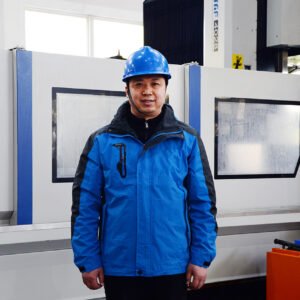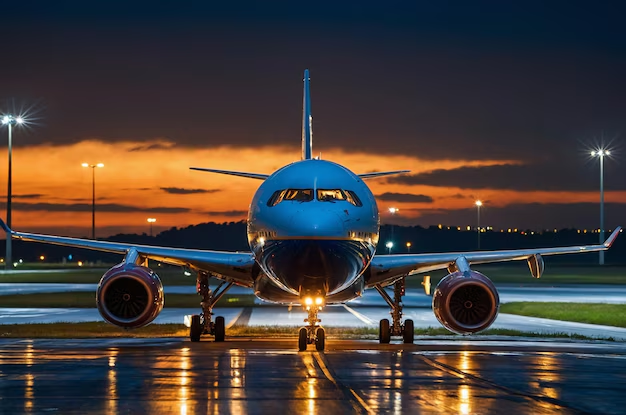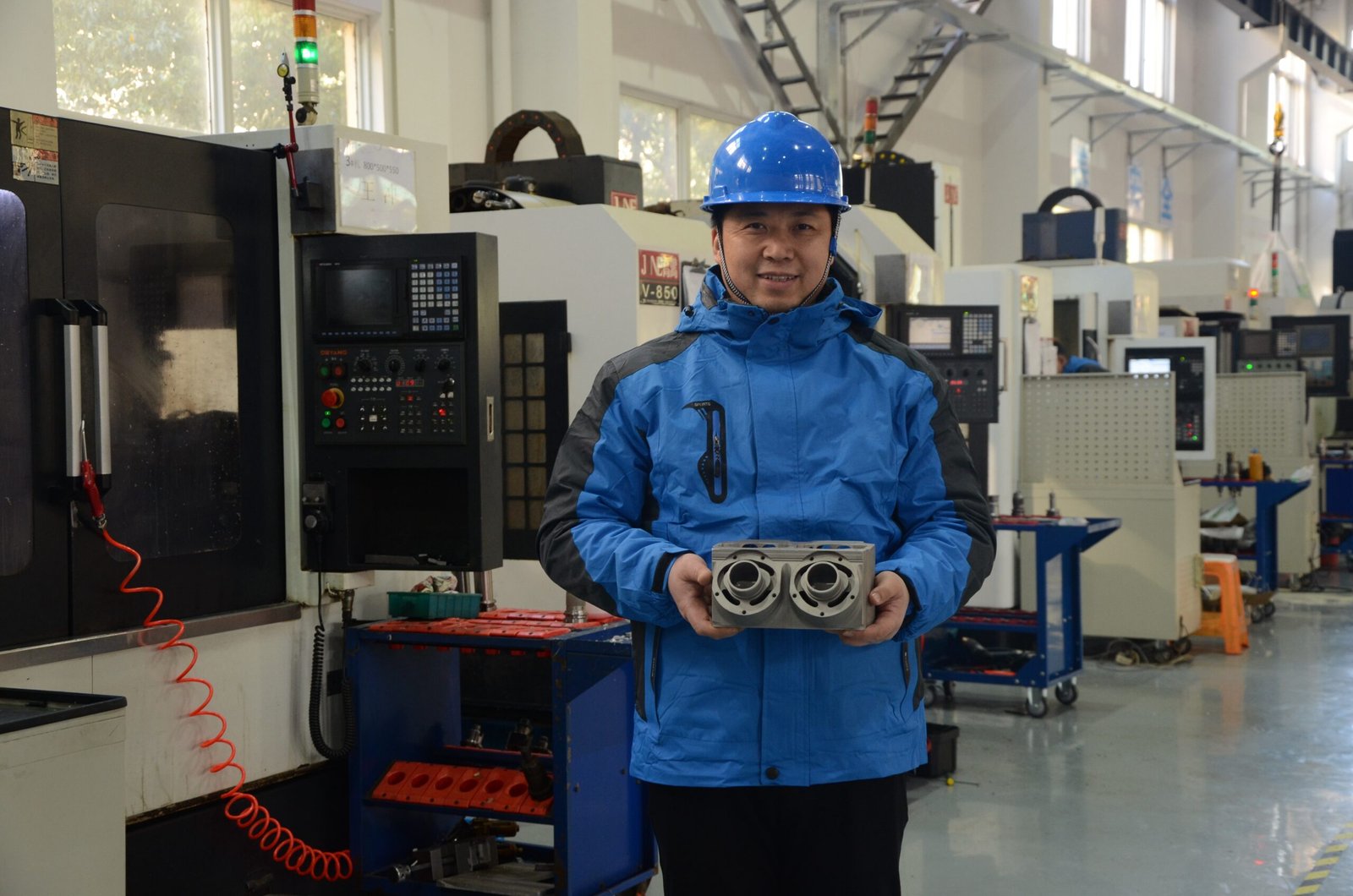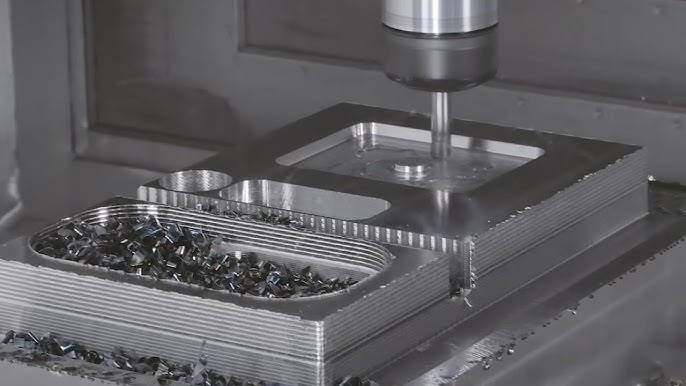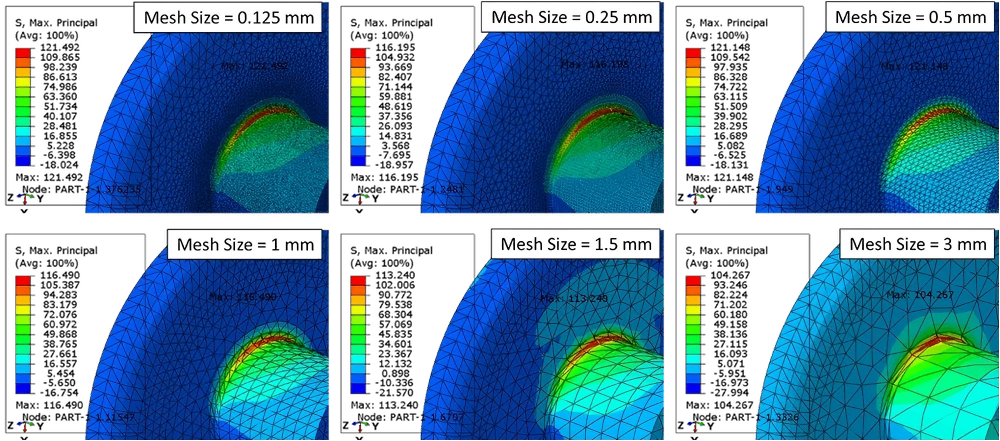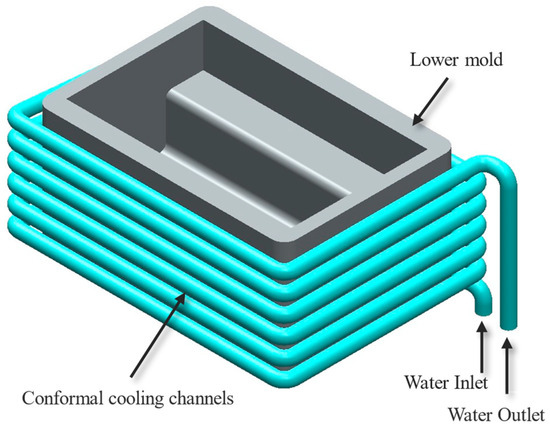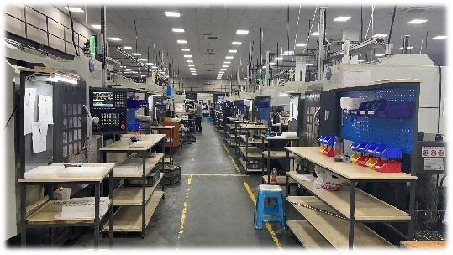
Did you ever wonder what would happen if one turbine blade was misaligned by only a millimeter? The repercussions can be catastrophic, including decreased fuel economy, mechanical failure, and disturbed airflow. Precision is not an option but a lifeline in the aerospace Industry.
Every part of an airplane or spaceship needs to function perfectly in the face of harsh circumstances including fast speeds, extremely high temperatures, and significant stress. A little misalignment of the landing gear could compromise the safety of landings. The structural integrity of a rocket during liftoff is another example; even the slightest flaw could result in disastrous failure.
Accuracy ensures efficiency, safety, and adherence to the strict regulations that characterize the aircraft sector. However, how do manufacturers attain this constant precision? This is where CNC machining is useful. In this blog, we will discuss how CNC machining helps in attaining this precision and propelling the aerospace industry forward. So are you ready? Let's begin.
1. Historical Evolution in Aerospace manufacturing
A monument to human creativity and the quest for perfection is the long history of aeronautical production. Early aircraft were meticulously constructed with hand tools, with expert artisans shaping each part by hand. Although it established the foundation for flight, this method needed the accuracy and scalability required for sophisticated aerospace applications.
The initial steps toward automation were taken with the introduction of numerically controlled (NC) machines in the middle of the 20th century, which improved consistency and decreased errors.
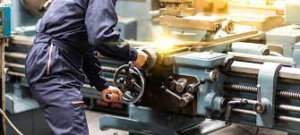
The industry was transformed in the 1980s by the emergence of CNC (Computer Numerical Control) machining. CNC machines made it possible to produce complex parts with unparalleled precision and repeatability by incorporating computers into manufacturing.
Design possibilities were revolutionized by this technology, which made it possible to create intricate shapes that were impossible to accomplish with hand tools. This made it possible to produce landing gear, fuselage, and turbine blades more quickly, precisely, and consistently.
A significant step toward highly automated, efficient production from labor-intensive manual procedures is CNC machining. Its capacity to convert digital ideas into faultless physical components has increased production productivity and pushed the limits of aerospace innovation.
Today, the manufacturing foundation is CNC technology, which guarantees the accuracy and dependability required for safe and effective flight.
2. Key Features of CNC Machining
Modern production relies heavily on CNC machining because of its well-known accuracy, versatility, and efficiency. By automating component production, this method guarantees constant quality and precise tolerances.
In sectors where accuracy and dependability are crucial, such as aerospace, CNC machining has become indispensable due to its capacity to handle complicated geometries. Important developments like multi-axis machining and real-time process monitoring expand its potential and allow for quicker production and better outcomes.
5-7-Axis CNC Machining and Its Benefits
Manufacturing technology has advanced significantly with multi-axis CNC machining, including 5-axis systems. In contrast to conventional 3-axis machines, multi-axis setups enable the cutting tools to operate simultaneously along extra axes, allowing for the fabrication of complex parts with fewer setups.
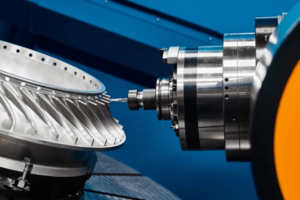 CNC 5-Axis Machine
CNC 5-Axis Machine
Although 5-axis CNC machining is revolutionary, 7-axis CNC machining increases precision and adaptability to a whole new level. Seven-axis systems let the cutting tool or workpiece to move along seven separate axes, including rotational (A, B, C) and linear (X, Y, and Z) movements, plus an extra axis, usually for rotating the tool or part.
This minimizes the need for repositioning or repeated setups by allowing the machine to approach the workpiece from almost any angle. While boosting overall efficiency, multi-axis machining guarantees the best possible precision and structural integrity.
Seven-axis machining has many benefits, particularly in the production of aircraft. Highly complex and asymmetrical elements, such as landing gear components or airframe structures, can be produced with ease because of it.
Real-Time Monitoring and Process Optimization
The real-time monitoring and process optimization capabilities of CNC machining provide manufacturing with a new degree of control. Critical factors including cutting forces, tool wear, and machine performance are continuously monitored by sensors and software, enabling real-time adjustments. Defects are minimized, downtime is decreased, and overall production is increased.
Real-time monitoring guarantees that every component satisfies exact specifications while minimizing resources and maintaining constant production in aircraft manufacturing, where accuracy and adherence to strict standards are crucial.
4. Types of CNC Machines Used in Aerospace
A variety of CNC machines are used in the aerospace sector to produce high-performance, precise parts. Every machine is customized to do certain jobs, guaranteeing that intricate geometries, exacting tolerances, and material characteristics are satisfied. The following CNC machines are most frequently utilized in the aerospace industry:
1. CNC Milling Machines
In the aircraft industry, CNC milling machines are widely utilized and versatile for producing complex parts such as airframes, structural brackets, and turbine blades. These devices remove the material with great precision and clean finishes by using revolving cutting cutters. Complex designs can be handled in a single configuration with multi-axis milling machines, like 5-axis and 7-axis systems.
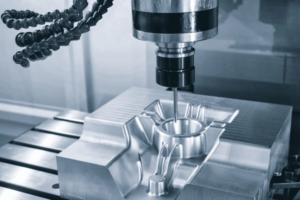
2. CNC Turning Machine
Shafts, fasteners, and landing gear pieces are examples of cylindrical components that require CNC turning machines, often known as lathes. These machines guarantee exceptional precision and repeatability by spinning the workpiece while a stationary cutting tool forms it. Live tooling capabilities are a characteristic of many CNC lathes used in aerospace, which enable the addition of milled features in a single operation.
3. CNC Grinding Machines
Achieving extremely smooth surfaces and precise tolerances requires the use of CNC grinding equipment. Parts like bearings and engine parts, where surface polish and dimensional precision are essential for performance, are frequently refined using them. Materials like ceramics and tough metals that are challenging to the mill can be handled by these devices.
4. CNC Electrical Discharge Machines (EDM)
Intricate features like tiny holes, slots, and complicated forms may be created with EDM, which is perfect for machining materials that are difficult to cut. High-strength alloys or composites, such as those found in engine parts and tooling dies, are frequently produced in the aerospace industry using CNC EDM.
5. CNC Router Machine
The aircraft sector frequently utilizes CNC routers to cut and shape lightweight materials including carbon fiber, composites, and aluminum. When it comes to creating panels, wings, and other structural elements that need to be fast and precise, they are especially helpful.
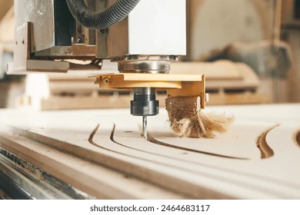
5. Design and Prototyping with CNC Machining
In aerospace, CNC machining is crucial to design and prototyping because it allows engineers to precisely turn creative ideas into functional parts. Through employing this technology, producers may produce prototypes that closely resemble the characteristics and functionality of finished goods, making testing and validation more precise. Aerospace firms may swiftly and effectively refine designs by utilizing CNC machining, guaranteeing that components match strict safety and performance requirements.
Role of CNC Machining in Rapid Prototyping
For aerospace to stay ahead of the competition and innovate, speed is essential during the design stage. Rapid prototyping is a strength of CNC machining, which can create excellent parts from digital models in a few hours or days. Since CNC machining does not require substantial tooling, it is perfect for producing small batches or custom prototypes, unlike traditional processes that rely on molds or dies. Because of the quick response, engineers may test designs earlier in the development process, which saves money and time on design revisions.
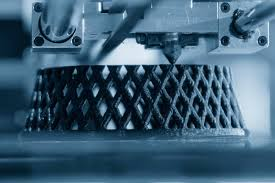
CNC Machining for Iterative Design Testing
Several iterations are frequently necessary in the aerospace sector to refine a design, particularly for intricate pieces like engine parts or airfoils. By providing flexibility and adaptability, CNC machining streamlines iterative testing. Engineers can make design modifications directly in CAD models, and CNC machines can quickly produce the revised part.
By addressing performance problems or design defects early on, this technique guarantees that prototypes progress effectively. CNC machining facilitates the creation of dependable, high-performance aerospace components by allowing for accurate, repeatable, and quick iterations.
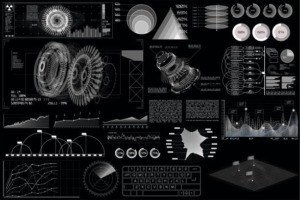
6. Applications Across Aerospace Sectors
Many aerospace industries rely on CNC machining to produce precise parts that satisfy the strict requirements of the field. Further applications of CNC machining in the aerospace industry include the following:
1. Engine Parts
Significant engine parts like compressor blades, turbine blades, and casings are made via CNC machining. Engine efficiency and safety are guaranteed by the high precision of CNC, which guarantees that parts can tolerate high pressure and temperatures.
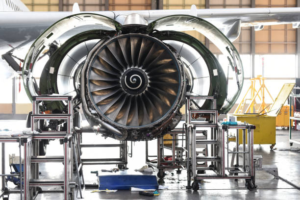
2. Interiors of Aircraft
Seats, panels, and structural supports are examples of lightweight, long-lasting interior components made with CNC machining. Comfort and safety are guaranteed while weight is optimized for fuel economy thanks to the capacity to work with metals and composites.
3. Landing Gear
Aerial vehicles must have landing gear components to operate safely. Parts like struts, wheels, and hydraulic systems are guaranteed to exceed the strict safety and durability requirements needed for takeoff and landing thanks to CNC machining.
4. Fittings and Aerospace Fasteners
Fasteners and fittings are made with extreme accuracy using CNC machining to guarantee that they fulfill strict requirements for strength and functionality in aerospace applications, ranging from satellite systems to airplane assembly.
5. Aerostructures
Wing ribs, fuselage frames, and tail sections are examples of complicated aerostructures that are fabricated using CNC machines. The accuracy of CNC machining guarantees that these parts are strong, lightweight, and precisely positioned for secure functioning.
6. Prototyping for New Technologies
In aerospace R&D, CNC machining is essential for developing new technology prototypes. Innovative aerospace systems and components may be quickly tested and iterated upon because of their ability to produce test models quickly.
7. Aircraft Control Systems
Parts for control systems, such as flaps, rudders, and throttle mechanisms, must be produced using CNC machining. Accurate control and safety during flight are ensured by precision in these components.
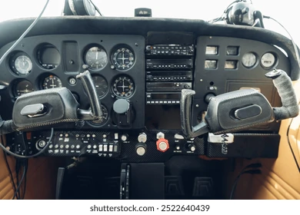
7. Material Considerations in Aerospace CNC Machining
The selection of materials is essential in aircraft manufacturing since parts need to be lightweight and function at high levels while withstanding harsh environments. CNC machining is essential to handle these materials with extreme accuracy and guarantee that they satisfy strict safety, performance, and durability standards. The primary materials used in aircraft CNC machining are examined here, along with the difficulties they present.
1. Titanium Alloys
Titanium alloys are renowned for their superior high-temperature performance, corrosion resistance, and strength-to-weight ratio. They are frequently utilized for engine and structural parts. However, titanium's hardness and susceptibility to work harden make it difficult to mill, demanding slower cutting speeds and expert tools.
2. Aluminum Alloys
Aluminum's strength and low weight make it popular for aeronautical applications. It is perfect for parts like wings, fuselages, and structural frames since it is simpler to process than titanium. Aluminum is valued because it is lightweight and easy to machine because of its great strength and fatigue resistance, aluminum alloys like 2024 and 7075 are commonly used.
3. Super Alloys
Superalloys like Inconel and Hastelloy are utilized in exhaust systems and jet engines, which operate at elevated temperatures. These alloys can be difficult to machine because of their hardness and propensity to work harden during cutting despite their extreme toughness and resistance to heat and corrosion. To handle these materials efficiently, CNC machines need certain tools and configurations.
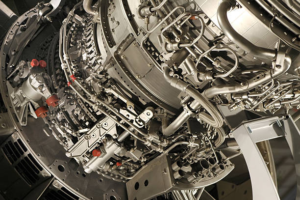
4. Carbon Fiber Composites (CFRPs)
The exceptional strength and low weight of carbon fiber-reinforced polymers (CFRPs) make them popular in the aerospace industry. Precision shape of items like interior panels and airframe components is made possible by CNC machining. However, CFRPs can be difficult to work with and prone to delamination, therefore special cooling systems and machining techniques are needed.
5. Stainless Steel
The exceptional corrosion resistance and strength of stainless steel make it a popular choice for structural elements, fuel systems, and aerospace fasteners. Although it is simpler to process compared to superalloys or titanium, it can still have problems, such as requiring high cutting forces and work hardening.
6. Alloys of Magnesium
Magnesium alloys are perfect for aircraft applications where weight reduction is crucial as they are lightweight and easily machined. Magnesium must be handled carefully and cooled during machining, though, because it is extremely combustible.
7. Hybrid Materials
Metals and composites are combined in hybrid materials to provide exceptional strength, resilience to heat, and durability. In aerospace, these materials—like metal matrix composites, or MMCs—are being utilized more and more for structural and engine components. However, because each layer has different properties, it is difficult to machine hybrid materials, which calls for careful control over heat and cutting pressures.
8. Advancements and Innovations
New technologies that increase accuracy, productivity, and material capabilities are driving further advancements in CNC machining in the aerospace industry. These developments are crucial for satisfying the industry's expanding needs, which include quicker manufacturing cycles, high-performance materials, and lightweight designs. The following significant developments will influence aerospace CNC machining in the future:
1. Hybrid Production: Additive + CNC
CNC machining and additive manufacturing, or 3D printing, are transforming the aerospace industry. With the use of this hybrid technique, complicated geometries with optimized weight can be created, leading to more effective designs. Particularly for parts with complex interior structures, it also cuts down on production time and material waste.
2. Machining in Multiple Axes
Aerospace manufacturing capabilities have increased with the emergence of 5-axis and 7-axis CNC machines. These devices minimize errors and eliminate the need for reorientation by processing complex parts with multiple angles in a single configuration. For the production of extremely detailed aerospace parts like turbine blades, engine casings, and complex airframe structures, this development is essential.
3. Artificial Intelligence and Automation
Automation and artificial intelligence (AI) are revolutionizing CNC machining procedures, streamlining workflows, and lowering human error. Artificial Intelligence (AI) systems use real-time data analysis to predict maintenance requirements, improve machining precision, and modify settings, increasing productivity and reducing costs. Moreover, automated systems allow for more reliable and rapid production.
4. High Speed Machining (HSM)
Faster cutting speeds and shorter cycle durations made possible by high-speed machining boost output without sacrificing accuracy. High-volume production of intricate aerospace components is a perfect fit for this technology, which enables producers to fulfill schedules without compromising quality.
5. Advanced Instrumentation
The machining of hard materials like titanium and superalloys is being improved by new tooling materials including diamond-coated tools, cermet tools, and PCD (polycrystalline diamond) tools. By enhancing wear resistance, prolonging tool life, and producing higher surface finishes, these cutting-edge tools increase the efficiency of machining operations.
6. Real-Time Monitoring
Real-time observations during milling are made possible by in-situ monitoring technologies including vibration analysis and laser sensors. Identifying deviations early, lowering faults, and increasing overall part correctness, aids in upholding high standards of quality.
7. Nano-Machining
Components can be produced with extreme precision at the micron or sub-micron level by using nano-machining. This helps develop highly detailed components like fuel injectors, sensors, and micro-turbines, which expands the potential of next-generation aerospace technologies.
9. Quality Control and Certification
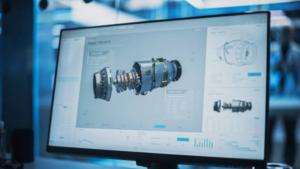
Quality assurance and certification are crucial in the aerospace sector to guarantee that parts fulfill the exacting safety, performance, and dependability requirements needed for flight. Precision parts are produced via CNC machining, but they also need to meet stringent quality standards to guarantee their suitability for their intended use.
This section examines the maintenance of quality control in aerospace CNC machining, emphasizing the role that certifications like AS9100 and ISO 9001 play in guaranteeing adherence to aerospace standards.
Ensuring Compliance with Aerospace Standards
Aerospace manufacturers must adhere to recognized international standards to ensure the highest quality parts. For aerospace manufacturers, AS9100 and ISO 9001 are two of the most crucial certifications.
For the aerospace sector, AS9100 is a specific quality management standard. It addresses dealing with safety-critical parts, material management, and traceability, among other sector-specific requirements. Obtaining AS9100 accreditation guarantees that a manufacturer has put in place a strong quality management system (QMS) that upholds strict requirements throughout the whole production process.
Although it is applicable to many industries, ISO 9001 offers a general foundation for a quality management system. It guarantees that producers uphold constant quality and are committed to ongoing development, which is essential for cutting down on flaws, increasing productivity, and satisfying client demands.
To make sure that procedures are continuously improved and that every component satisfies the relevant safety and regulatory criteria, both standards call for thorough audits, thorough documentation, and continuous monitoring.
10. Sustainability in Aerospace CNC Machining
The aerospace industry's emphasis on minimizing its environmental effect while preserving remarkable precision and performance has led to an increasing emphasis on sustainability in CNC machining. Aerospace manufacturers are reinventing production processes to be more environmentally friendly and resource-efficient by implementing cutting-edge technologies and eco-informed practices.
1. Cutting Down on Material Waste and Energy Use
CNC machining reduces material waste by using optimized toolpaths and precision cutting processes. More material may be used thanks to advanced multi-axis machining, and unwanted scraps are increasingly being recycled for later use. Leaner and more environmentally friendly production is achieved through the use of energy-efficient CNC machines and real-time process monitoring.
2. Using Sustainable Practices and Materials
Because of their strength and capacity to be recycled, metals like titanium and aluminum are frequently utilized in aircraft. Additionally popular are high-performance composites made of environmentally friendly polymers. CNC facilities are reducing their carbon footprint by implementing green practices like renewable energy sources, lower emissions equipment, and recyclable coolant systems.
3. Developing an Eco-Friendly Aerospace Sector
The aerospace CNC machining industry's focus on environmental management and innovation is reflected in sustainability. Manufacturers are producing high-quality components while fulfilling global sustainability goals by cutting waste, implementing recyclable materials, and streamlining procedures. These initiatives guarantee a sustainable future for the aircraft industry in addition to complying with environmental standards.
11. Aerospace CNC Machining Challenges
The rigorous standards and intricate requirements of the aerospace industry pose special obstacles for CNC machining. In order to retain efficiency and quality, manufacturers must overcome challenges relating to materials, pricing, and precision.
1. Complex Designs and Strict Tolerances
Extremely strict tolerances are required for aerospace parts. Even with sophisticated CNC machines, it can be difficult to produce components with complex geometry. Frequent calibration and specialized equipment are frequently needed to achieve this level of precision.
2. Machining Hard Materials
It is challenging to mill materials like titanium and superalloys. Advanced cutting tools are necessary for these materials because they generate rapid tool wear. Working with such materials adds complication in maintaining consistent quality.
3. Expensive Prices and Long Lead Times
The expense of materials, specialized equipment, and lengthy machining times make CNC machining in the aerospace industry costly. Small production runs and prototyping also increase expenses. A constant difficulty in meeting deadlines without sacrificing quality.
4. Adapting to Recent Advances in Technology
The aircraft sector embraces new technologies at a quick pace. Manufacturers need to spend money on the newest CNC equipment and software. To remain competitive, this calls for constant improvement and training.
5. Standards of Quality and Regulations
Complying with strict certifications such as AS9100 raises the amount of effort. Manufacturers are required to maintain traceability and record each step. Processes for quality control must be rigorous to meet these standards.
Despite these obstacles, CNC machining in aerospace is still developing. These challenges are being addressed while fulfilling the high standards of the business thanks to advancements in tools, software, and procedures.
12. CNC Machining's Benefits Over the Competition
In aerospace manufacturing, CNC machining is essential due to its many benefits. Its accuracy, adaptability, and effectiveness provide producers with a competitive advantage in the production of superior components.
1. Outstanding Accuracy and Reliability
CNC machines can attain strict tolerances, items will be uniform. In the aerospace industry, this degree of accuracy is essential because even little errors might fail. Additionally, automated procedures guarantee consistent quality by lowering human error.
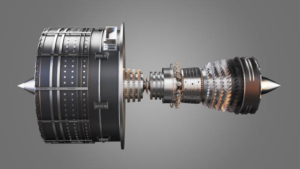
2. Adaptability to Different Materials and Uses
A variety of materials, such as composites, titanium, and aluminum, can be processed by CNC machines. Manufacturers can create intricate geometries for a range of aircraft components, including structural elements and engine parts, because of their versatility.
3. Quick Prototyping and Manufacturing
Prototyping and small-batch production are accelerated by CNC machining. Lead times are shortened by enabling rapid testing and iteration. Manufacturers can react to market demands and design modifications more quickly.
4. Economical for Accurate Manufacturing
Over time, CNC machining reduces expenses, even if initial setup costs can be high. Overall savings are a result of reduced labor requirements, minimum waste, and efficient material utilization.
5. Observance of Industry Standards
CNC machines are perfect for achieving strict aerospace certifications like AS9100. They guarantee that components fulfill regulatory standards by providing traceability, precision, and repeatability.
13. Case Studies and Success Stories
Leading aircraft firms rely heavily on CNC machining for their success. Its capacity to provide accuracy, effectiveness, and creativity has revolutionized the production of intricate components. Here are some noteworthy instances illustrating its influence.
The Use of CNC for Top Aerospace Companies
CNC machining is a vital component used by major aircraft companies such as Boeing, Airbus, and SpaceX. Boeing ensures aerodynamic performance by using multi-axis CNC machines to make precise fuselage and wing components. Airbus uses CNC technology to create lightweight structural components that lighten aircraft and increase fuel economy. Reusable rocket parts with precise tolerances are made by SpaceX using CNC machining, which is essential to the company's goal of affordable space exploration.
Examples of Complex Parts Effectively Produced
- Turbine Blades: Turbine blades with complex cooling channels are made by CNC machining. To preserve engine efficiency, these blades must have precise geometries and withstand extremely high temperatures.
- Fuel Injector Nozzles: For better combustion in jet engines, additive CNC machining produces lightweight, highly precise fuel nozzles.
- Satellite Housings: For the best performance in orbit, CNC machines create complex satellite housings that strike a balance between endurance and lightweight design.
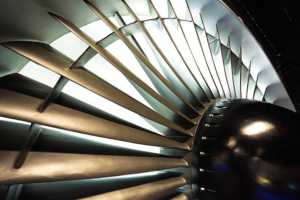
14. Global Trends in CNC Machining for Aerospace
Rapid technological breakthroughs and changing global needs are driving the aerospace CNC machining industry's evolution. The design, production, and delivery of aerospace components by manufacturers are being influenced by important changes.
1. Growing Use of AI and Automation
Aerospace production is changing due to automation. AI-driven solutions that are coupled with CNC machines improve tool routes, track data in real time, and minimize downtime. Fully automated operations in smart factories are quickly becoming the norm in the industry.
2. Developments in the Processing of Materials
Ceramic-matrix composites (CMCs) and hybrid alloys are examples of new materials that are becoming increasingly widely used. These cutting-edge materials are being accommodated by CNC machining processes, which improve performance and durability in aerospace applications.
3. Environmentally Friendly Production
The use of green machining techniques is being driven by environmental concerns. Priorities now include waste reduction techniques, energy-efficient equipment, and recyclable materials. Renewable energy is also being used by manufacturers to power their manufacturing facilities.
4. Global Resilience of Supply Chains
To maintain the reliability of its supply chain, the aerospace industry is investing in local CNC machining facilities. Regional hubs eliminate disruptions, guarantee faster component delivery, and lessen dependency on international shipping.
15. Future Prospects for CNC Machining
CNC machining in aircraft appears to have a bright future because of growing industry demands and technological improvements. Innovations will guarantee that CNC machining continues to be a vital component of aircraft manufacturing by improving precision, efficiency, and sustainability. Here are some key aspects of the future of CNC Machining.
1. Combining Machine Learning and AI
The role of AI and machine learning in CNC process optimization will increase. Improved defect identification, automatic toolpath modifications, and predictive maintenance will lower downtime and raise quality.
2. Growing Utilization of Hybrid Production
More design flexibility will be possible when CNC machining and additive manufacturing are combined. Complex geometries and lightweight constructions that are perfect for aerospace applications can be produced more efficiently thanks to hybrid methods.
3. Next-Generation Material Development
The possibilities of CNC machining will be expanded by developments in materials such as composites, high-temperature alloys, and nanomaterials. As machines become more adept at handling these materials, advancements in aircraft design will be possible.
Conclusion:
CNC machining, which provides unparalleled accuracy, efficiency, and versatility, has emerged as a key component of aerospace manufacturing. From material processing and prototyping to the manufacturing of intricate components, it keeps pushing the boundaries of industry norms. Future developments in automation, sustainability, and hybrid manufacturing are influencing the industry by allowing producers to satisfy expanding consumer needs while tackling environmental issues.
To achieve innovation, dependability, and sustainability as aircraft technology advances, CNC machining will continue to be essential. By adopting innovative methods and materials, the sector is ready to overcome obstacles and build an aerospace engineering future with seemingly endless possibilities. Does this blog clear your thoughts about CNC machining utilization in the aerospace industry? Do you have any queries? Let us know by commenting below.

